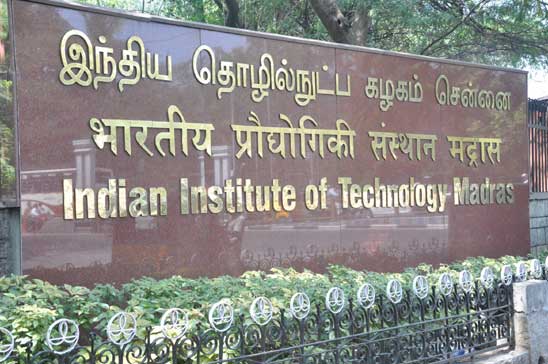IIT Madras Researchers Develop High-Performance Magnesium Alloy That Can Replace Steel and Aluminium in Automobile Industry
Chennai: Indian Institute of Technology Madras Researchers working with the University of North Texas and U.S. Army Research Laboratory have developed an engineered magnesium alloy with significantly improved properties, which can replace steel and aluminium alloys in automotive and aerospace components.
The current industrial application of wrought magnesium alloys in structural components is very limited due to their poor moderate/low strength, poor ductility, yield strength asymmetry and lack of high strain rate super plasticity despite their density being two-third of aluminium and one-quarter of steel.
With vehicular emissions alone contributing 27 per cent of total carbon dioxide emissions, countries around the world are focusing on reducing them. A major focus has been lowering the carbon footprint of vehicles by using light-weight material in their body. Light-weight vehicles take less energy (i.e. fuel) to run and are therefore one of the strategies to increase vehicle’s energy-efficiency.
A collaborative research project on this area was carried out by Dr. Sushanta Kumar Panigrahi, Associate Professor, Department of Mechanical Engineering, IIT Madras, Prof. Rajiv Mishra, University Distinguished Research Professor, University of North Texas, U.S., and Dr. R.C. Brennan and Mr. K. Cho from the U.S. Army Research Laboratory (Aberdeen Proving Grounds).
The research team has made headway in solving this challenging problem by formulating a magnesium alloy with almost zero yield asymmetry and high ductility. Their research paper has been published in the reputed peer-reviewed journal Material Research Letters.
The new engineered alloy is strong, highly ductile and its superplasticity is achieved at higher strain-rates which reduces overall manufacturing time, effort and costs. In addition to this, it is also lightweight, which helps lower the carbon footprint of vehicles. Lightweight vehicles need lesser fuel to run and are therefore more fuel-efficient.
Elaborating on their research, Dr. Sushanta Kumar Panigrahi, Associate Professor, Department of Mechanical Engineering, IIT Madras, said, “In view of the compelling needs for economical usage of scarce energy resources and ever-stricter control over emissions to lower environmental impact, automotive and aerospace industries are searching for alternative advanced light-weight structural materials to existing conventional materials. Being one of the lightest and energy-efficient structural materials, magnesium alloys are potential candidates to replace steel and aluminium alloys in automotive and aerospace components since their density is two-thirds of aluminium and one-quarter of steel.”
His research group is also trying to increase the load-bearing capacity of metals and alloys through microstructural engineering and processing of metals. After this feat, the team is all set to apply the same strategy of processing to other known magnesium alloys and metallic alloys with the intention of obtaining highly efficient stronger materials with superior performance.
For this research, the scientists used a magnesium alloy containing rare earth elements like Gadolinium (Gd), Yttrium (Y) and Zirconium (Zr). The alloy was subjected to a thermo-mechanical processing technique (severe plastic deformation and ageing treatment) to obtain an ultrafine-grained version of this magnesium alloy.
Thereafter, the team engineered the nano-precipitates and thermally stable ultrafine intermetallic compounds in the ultra-fine-grained magnesium alloy. Through this technique, the group was able to achieve the highest combination of strength-ductility and highest high strain rate superplasticity among all the existing magnesium alloys reported in the literature to date.
Called ‘Innovative Materials Processing and Characterization Research Group’ (IMPCRG), Dr. Sushanta Kumar Panigrahi’s research group is a pioneer in maximising structural efficiency of any metallic material via microstructural engineering and material processing-based manufacturing approaches. Maximising structural efficiency aims to establish a microstructure via innovative/advanced/existing material processing-based manufacturing routes in order to obtain the full potential of desirable properties in any metallic material.
To maximise the structural efficiency of a variety of materials, the IMPCRG uses advanced and innovative manufacturing or material processing approaches such as thermo-mechanical processing, severe plastic deformation based solid-state processing, macro-micro-incremental forming-based sheet metal processing, liquid state processing and joining based processing. In this theme, IMPCRG is actively associated with sponsored projects of government and private agencies like; Department of Science and Technology (DST), Indian Space Research Organisation (ISRO), Defence Research and Development Organisation (DRDO), Department of Scientific and Industrial Research (DSIR), Ministry of Human Resource Development (MHRD), Ministry of Heavy Industries, Mahindra & Mahindra, Renault Nissan, Titan Company Ltd, Aditya Birla Group and Rane NSK Steering System.
The IMPCRG is very active in publishing more than 70 SCI indexed international journal publications with Scopus “h” index of 25. The details of IMPCRG activities can be seen at https://mech.iitm.ac.in/meiitm/personnal/s-k-panigrahi/.

